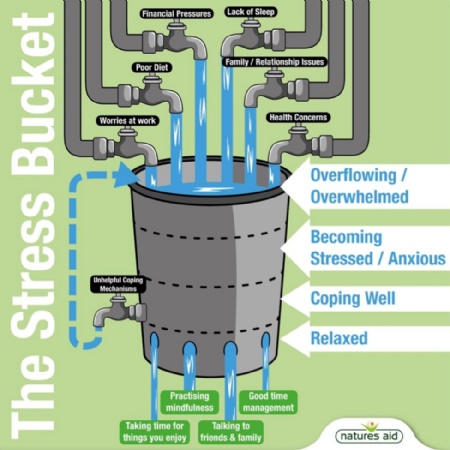Children's Mental Health Week
 In Children’s Mental Health Week, I thought I would focus on the concept of stress.
In Children’s Mental Health Week, I thought I would focus on the concept of stress.
I think it’s fair to say that most of us think of stress as something to avoid - being stressed is bad while the opposite, being relaxed and laid-back is good. If only life were that simple. In fact, stress is a natural part of life that can be used to our advantage, but must remain within our control.
There are times when without stress nothing would get done. Pupils wouldn’t be on time for our lessons, or wouldn’t meet all their prep deadlines, and a bit of stress of needing to be somewhere doing something might just help us get up in the morning! Feeling a little bit stressed means that we can engage positively with the world and do all the things we need to do. But, too much stress is a different matter altogether, impacting negatively on our physical and mental health and wellbeing and perhaps making us feel anxious, depressed and really glum.
It’s no surprise that for some of our pupils who maybe face exams or high stake performances, or are new in school; levels of maturity and anxiety may be higher than normal. So this week – Children’s Mental Health Week, is a good time to think about our own levels of stress and what we can do to make sure the stress in our lives is manageable and that things are not getting the better of us.
So I challenge you to try taking the stress bucket challenge.
I saw this recently and rather like the sense and simplicity of it. All you need to do is:
Look at the stress bucket picture and imagine that all the stress in your life is water pouring into a bucket. As long as the bucket doesn’t become too full, all is well. But if the bucket begins to fill up we become more and more anxious until the bucket overflows and we become overwhelmed. Fortunately, for most of us, this doesn’t happen too often because the bucket has a tap at the bottom so if the tap is open then the water or stress can drain away.
Now it is the case that we all have differing sized buckets these relate to our tolerance of stress. If you are anxious or worrying a lot, it probably means that your bucket is small currently and there is more chance that your bucket will overflow. If you’re very laid back and nothing is stressing you at the moment, then it’s likely that you have a bucket that won’t get full. In truth, at various points the size of our bucket will vary – some days we just have more on our plate to deal with, or indeed more resilience than others. However, when we look at the stress bucket diagram, we realise that we can take some control back over our stress levels. In other words, what we can control is water flowing into the bucket and then out via the tap.
So, the first part of the stress bucket challenge is to think about all the stress in our life that’s flowing into our buckets. This could be from school, work, friendships, home life or anything else that makes us worried or anxious. It might be a good idea to write them down. Is there anything here that can be changed so that less stress flows into our bucket? As an example, you could talk to your colleagues or teachers to help find ways to prioritise or reduce your workload or just help you manage a bit better. Perhaps you could try talking to those around you to see if they can take some of the pressure off you. But there will always be some things that you simply can’t change and so you will just have to accept that these things will continue to flow into the bucket and need to find a way out.
Here’s where the tap comes in. Even if we do have to put up with stress flowing into our bucket, as long as the tap is open we can let the stress out and the bucket will not overflow.
So how do we open the tap to let the stress out?
Well, the tap represents all the coping strategies we have to de-stress. Things like getting some exercise, doing something to help you relax such as listening to music or watching a film or socialising with friends, undertaking a DIY or handicraft project. Two of the most effective things we can all do to open the tap and let the stress drain away are making sure we get enough sleep and talking to someone about how we are feeling. The last one is really important because we know that withdrawing from family and friends and trying to cope on our own makes things worse and then it’s more likely that your bucket will overflow.
As well as these positive coping strategies we sometimes feel so stressed that we resort to the wrong coping strategies. These might include overreacting, being short tempered or just procrastinating and burying our heads in the sand when we know we have to do something that we don’t want to do. The problem with unhelpful strategies is that the water flows out of a different tap. We may get temporary relief, but this tap leads to the water going straight back into the bucket so the level of stress doesn’t end up any lower overall.
Once you have considered the stress flowing into your bucket, think about the coping strategies that you typically use to let the stress out of the bucket. It might help to write them down. If you have more unhelpful coping strategies than helpful ones, then that’s a sign that you are having a hard time managing your stress. In this case you really should talk to someone about how you are feeling. This might be for our pupils a Form Tutor, Head of Year, teacher or someone at home.
Even when stress buckets are full or overflowing, there is always something you can do to slow down the water going in and speed up the water going out. Speak out and make time to do the things that you love and find relaxing. Keep those buckets from spilling over!
Inservi Deo et laetare














